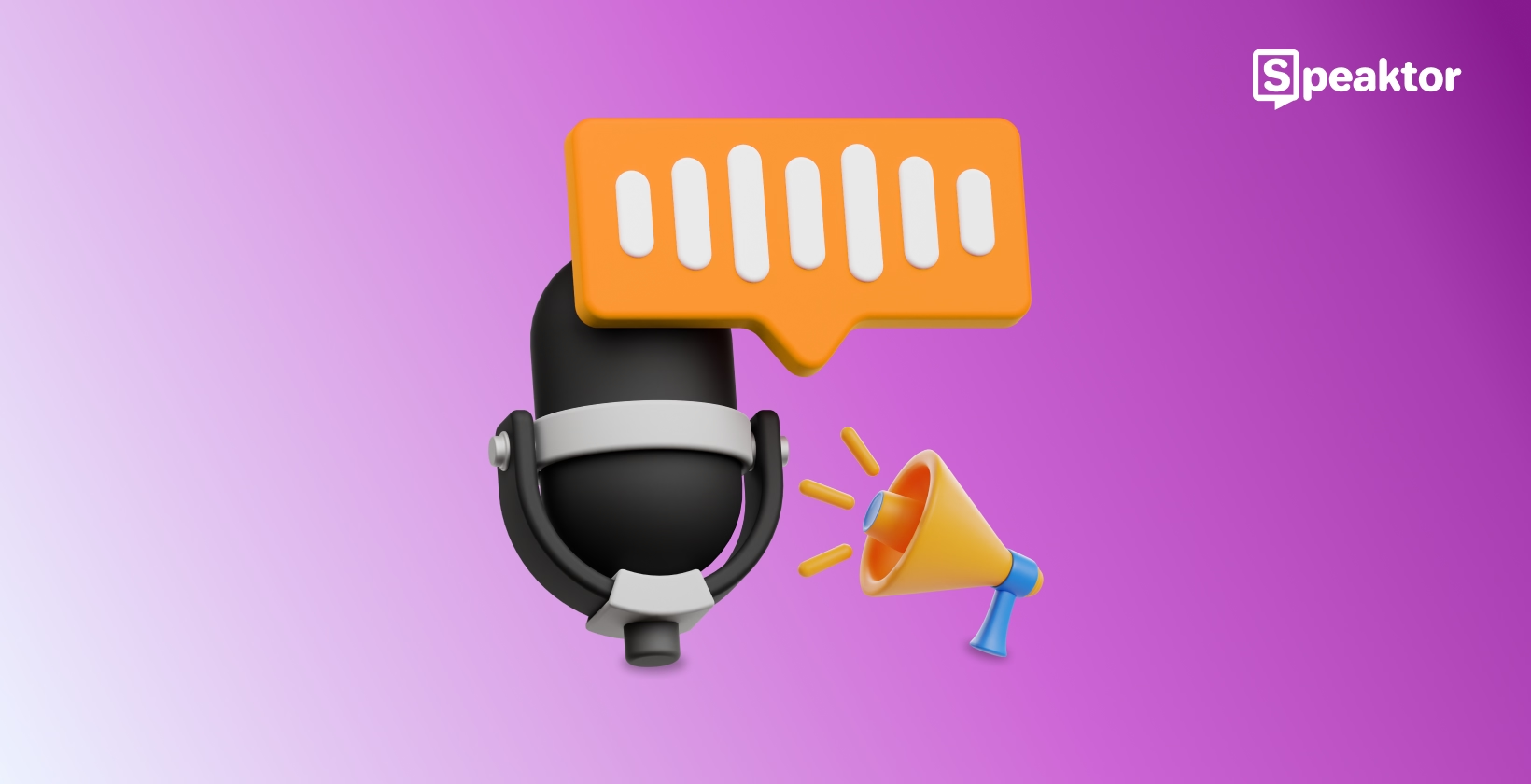Your brand speaks volumes before saying a word, how your brand sounds matters just as much as how it looks. Yet many companies struggle to create consistent voice branding across their marketing channels.
This guide walks you through developing a strong voice brand, from choosing your sonic elements to implementing them effectively. Learn how modern tools like Speaktor can help you build a sonic branding strategy that resonates with your audience and sets you apart.
What is Voice Branding?

Voice branding creates a distinctive identity for your brand through sound elements. These elements include voiceovers, sound signatures, and music that represent your brand's character. When done right, voice branding makes your brand stand out and creates lasting connections with your audience. Voice branding works because the human voice triggers emotional responses.
A strong voice brand combines technical and creative elements to shape your brand’s audio identity. Your tone—whether playful, authoritative, or friendly—must stay consistent across all touchpoints. Beyond tone, it includes sonic brand elements like voiceovers in ads, sound logos (e.g., Intel’s "bong," Netflix’s "ta-dum"), and jingles that enhance recall.
Research shows that sound-driven campaigns achieve 96% recall, compared to 89% for visual-only ads. Voice branding examples include MailChimp’s casual yet professional tone that simplifies complex tech and Coca-Cola’s warm, friendly voice that evokes celebration and joy. When brands maintain a consistent corporate voice, they build stronger audience connections.
How To Develop Essential Elements of Voice Branding
Voice branding creates a distinct audio identity for your business that customers recognize. This identity combines specific elements that work together to represent your brand's values and connect with your audience.
Brand Voice Personality Development
Every brand has a unique character, just like people do. You can shape this character using brand archetypes - twelve distinct personalities like the Hero or the Caregiver. These archetypes guide how you communicate with your audience and ensure your message matches your brand's core purpose.
Sonic Logo Design Principles
The sonic logo acts as your brand's audio signature. You need this signature to be simple enough for people to remember yet unique enough to stand out. Take Intel's signature sound - it lasts just a few seconds but has become known worldwide. Your sonic logo needs to trigger the right emotional response and fit naturally with your other branding elements.
Voice Guidelines and Standards
Voice guidelines ensure your brand sounds consistent everywhere it appears. This means creating clear rules for how your brand speaks across different channels, from social media posts to customer service calls. Your guidelines should explain when to adjust your tone while keeping your core voice intact. Regular training helps your team maintain these standards, and periodic reviews keep your voice current with market changes.
Audio Brand Identity Components
Audio brand identity brings all these elements together. This includes:
- Your sonic logo that customers hear in ads and videos
- Background music that sets the right mood in stores or promotional content
- Voice talents who represent your brand in commercials and announcements
- Sound effects that enhance your brand's storytelling
Creating Your Voice Branding Strategy
A voice branding strategy ensures your brand sounds consistent and connects with your target audience. This section explains the key steps to build a strategy that works for your business.
Defining Your Brand's Voice Characteristics
Your brand voice starts with your company's mission and values. Look at your current content and spot areas where your voice needs work. Strong brands show how this works in practice. Patagonia speaks about environmental issues in every message, while Nike pushes messages about personal achievement.
Choose 3-5 words that describe your brand's personality. These words guide your communication style. Brands like Dove focus on authenticity in their messages about beauty, while Tiffany maintains an elegant tone that matches their luxury products.
Audience Analysis and Voice Alignment
Understanding who you talk to shapes how you should sound. Use tools to learn how your audience speaks and what matters to them. Different audiences need different approaches. Your voice needs to stay recognizable across all platforms. Research shows that 75% of customers expect brands to sound the same everywhere they appear. You can test different approaches with your audience and adjust based on what works best.
Channel Considerations for Voice Implementation
Each platform needs a slightly different approach while keeping your core voice intact. HubSpot does this well: their professional content gets 84% more engagement because they match their voice to the platform. For global brands, consider how your voice translates to other cultures. Some phrases or jokes might not make sense in different languages.
Consistency Guidelines
Create clear rules for your brand voice that all team members can follow. Write down exactly how to use your brand's tone, what words to choose, and how to format different types of content. Train your team regularly on these guidelines and check content every few months to ensure it stays consistent.
Track how well your voice works by measuring engagement rates and how easily people recognize your brand. Update your guidelines yearly to stay current with how people communicate.
How to Create Professional Voice Branding with Speaktor
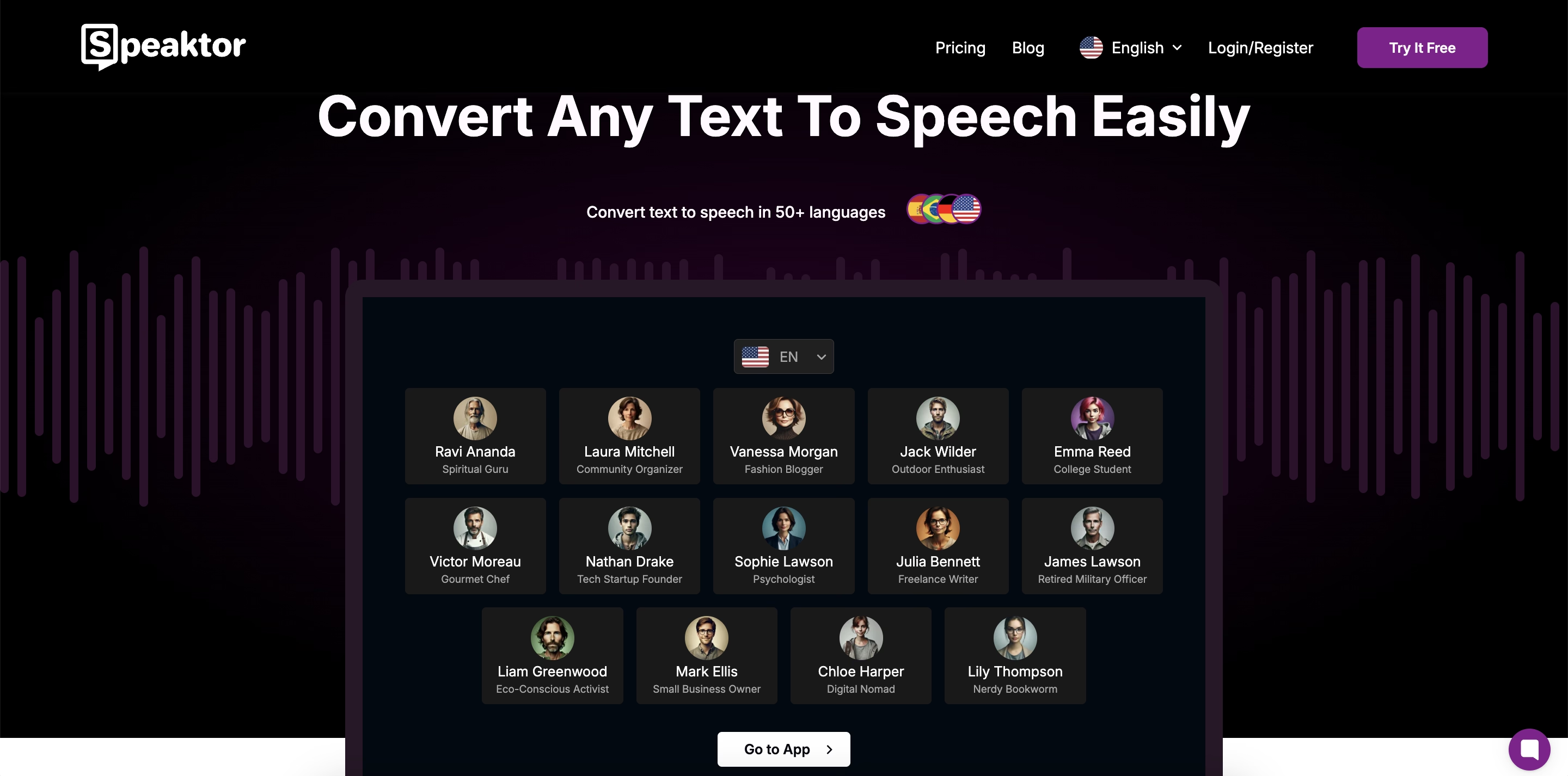
Speaktor helps businesses create and manage their voice branding using AI technology. The platform offers tools to develop unique audio identities that work across different channels while maintaining consistency.
Getting Started with Speaktor
Setting up your voice brand in Speaktor takes just a few steps. Create an account using your Google login or email to access the platform. Once registered, configure your use case and language. The platform offers different voices and over 50+ languages to choose from.
Voice Customization Features
Speaktor gives you detailed control over how your brand sounds. You can select the voice from 10+ voices and even adjust the playback speed. The platform lets you control how fast or slow the voice speaks. You can choose from 0.5x, 1x, 1.5x, and 2x speeds. If your brand operates globally, you can translate the text across multiple languages.
Implementation Across Channels
The process of creating voiceovers follows these steps:
Start by preparing your script and logging into Speaktor. Choose the "Create Voiceover" option and select your preferred method. You can convert text to voice, create an AI voiceover, or even turn spreadsheet content into speech.
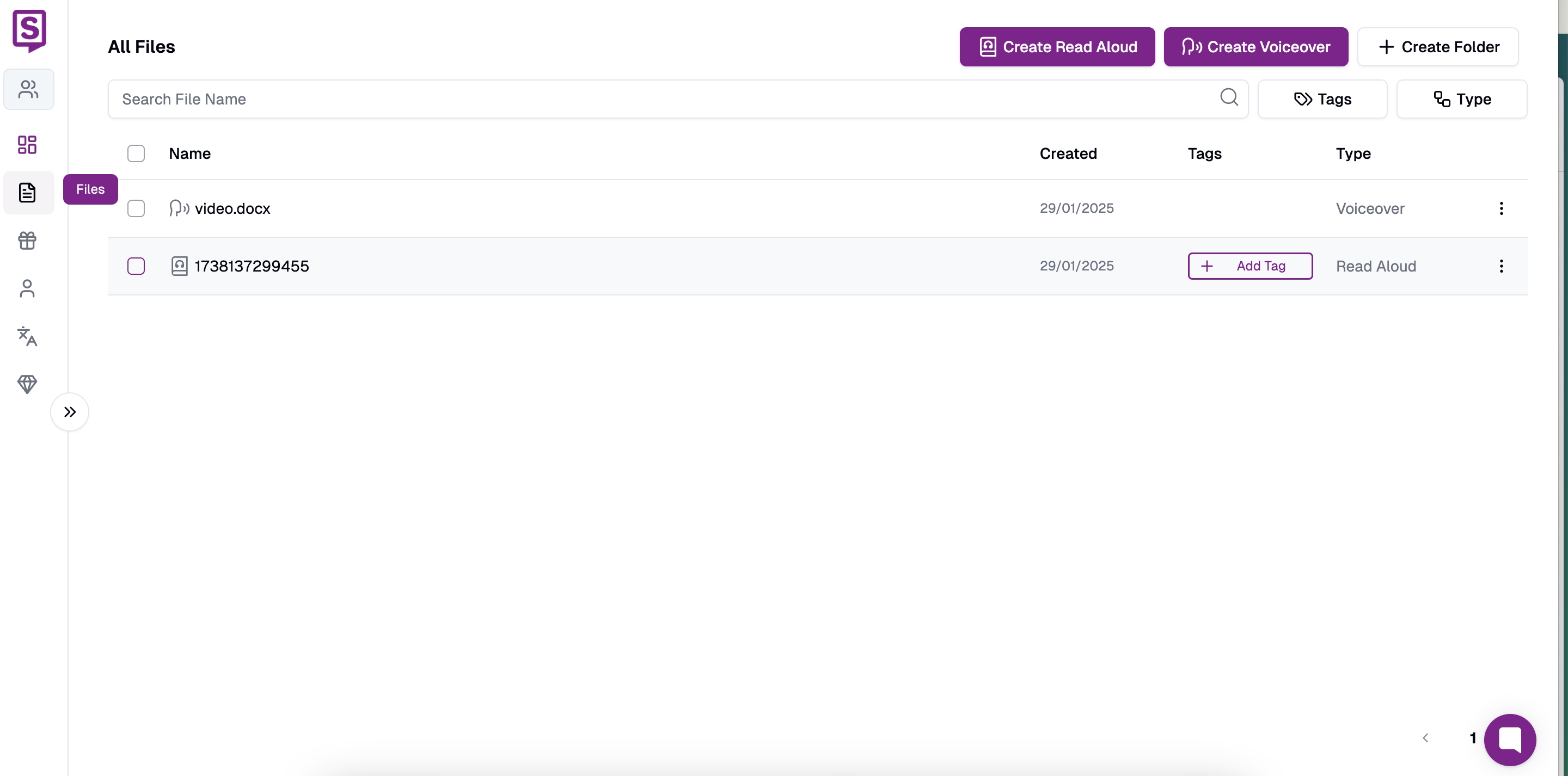
After uploading your file, customize the settings to match your needs. Select your preferred language and voice, and adjust settings like playback speed. You can split longer content into sections or keep it continuous.
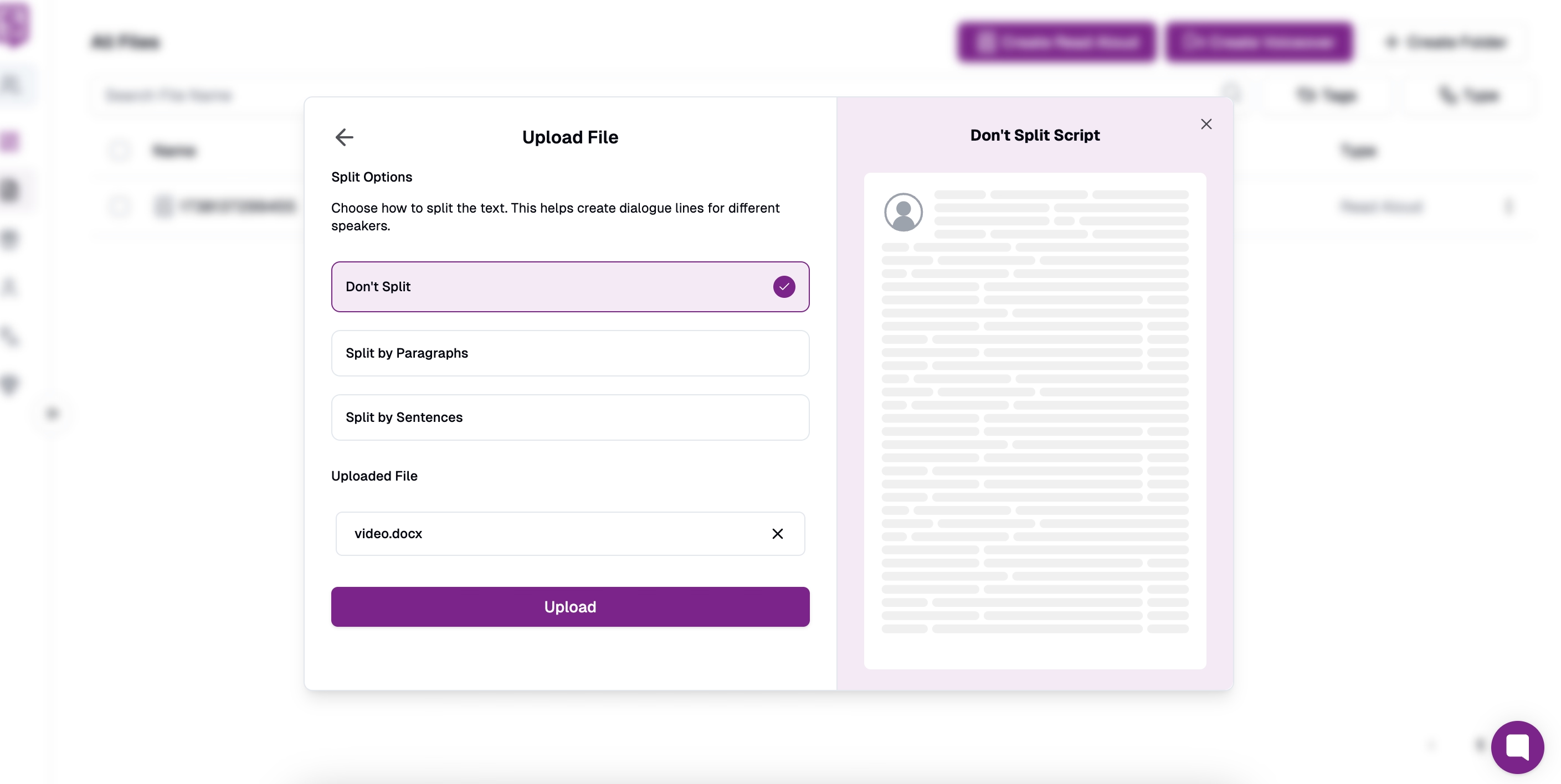
Save your finished voiceover in Speaktor's library or download it for use across your different marketing channels.
Alternative Solutions to Speaktor Comparison
Each voice generation platform offers unique features for different needs. Here's how they compare:
Murf.ai

Murf.ai stands out for global content creation. The platform includes over 200 AI voices across 20 languages, including less common ones like Tamil and Romanian. It offers five regional English accents and Spanish variants for local markets. The platform provides an API for large-scale projects and lets you fine-tune voice parameters for each recording.
Elevenlabs

ElevenLabs focuses on creating voices with natural emotions. The platform works well for gaming and animated content, with 4,200 character profiles across 32 languages. You can clone voices or create custom ones from scratch. Their Voice Design tool lets you build unique voices just by describing them.
WellSaid Labs
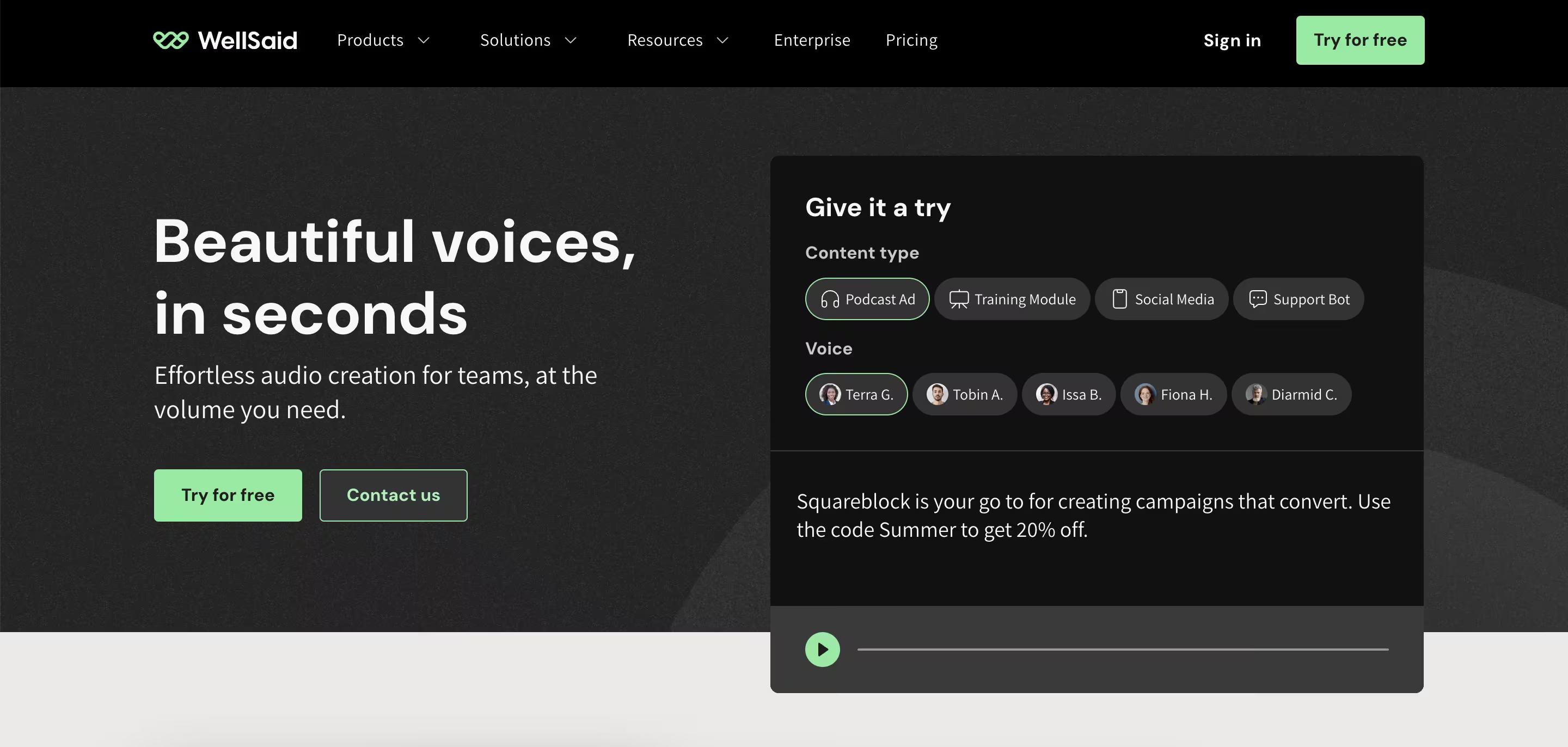
WellSaid Labs targets large companies with specific needs. They offer secure voice generation that meets strict business standards. The platform maintains voice consistency within 2% pitch variation, which is essential for training and legal content. While it only works in English, it excels at precise, professional output.
Descript
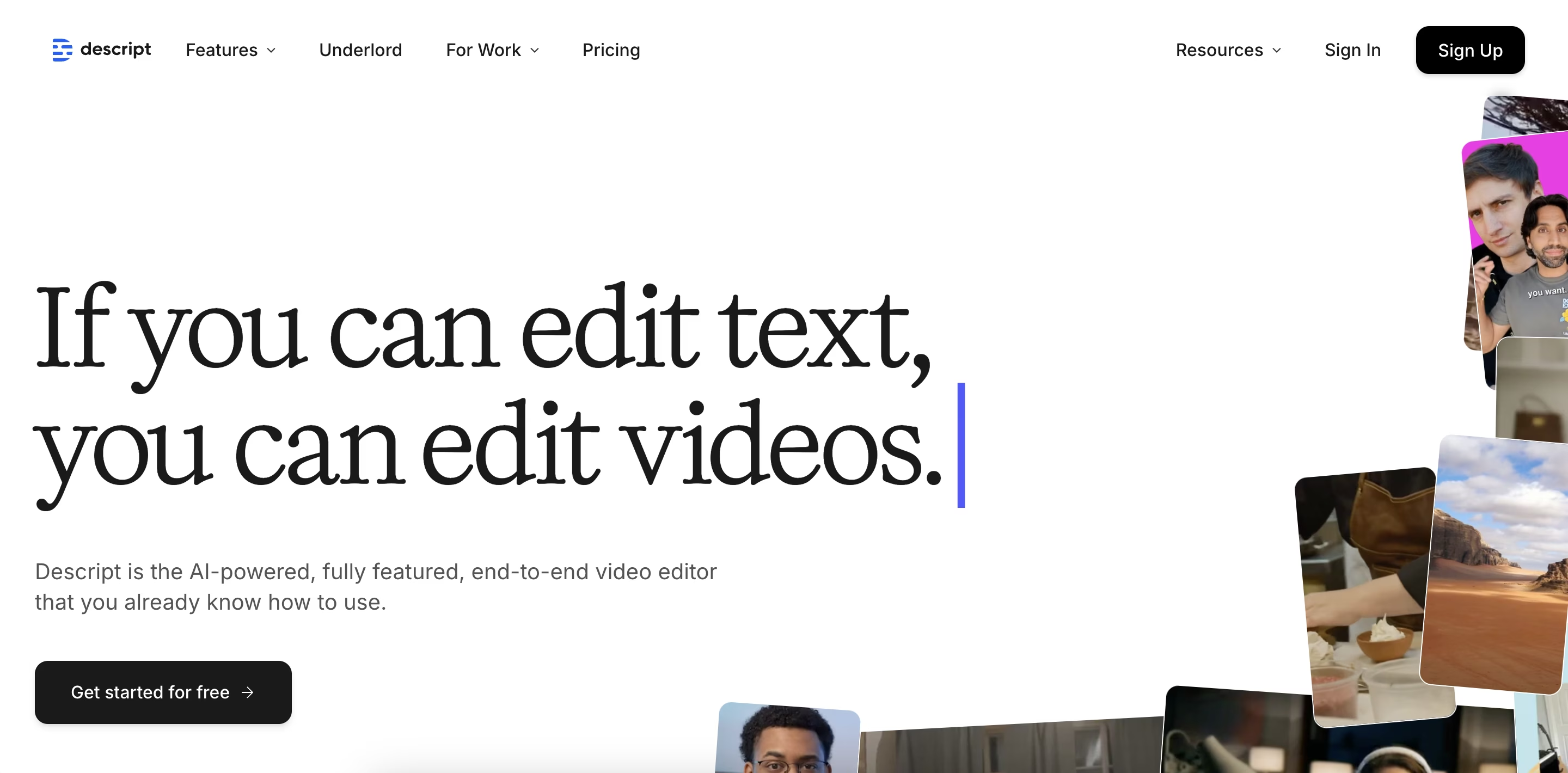
Descript combines voice creation with video editing. This makes it perfect for content creators needing audio and video tools. The platform can clone voices from short samples and match them to lip movements. It removes filler words automatically and handles multiple audio tracks, though it only supports eight languages.
Here’s how these four solutions compare:
Feature | Murf.ai | ElevenLabs | WellSaid Labs | Speaktor | Descript |
|---|---|---|---|---|---|
Main Strength | Multilingual Support | Emotional Expression | Enterprise Security | AI-powered text-to-speech conversion | Video Integration |
Languages Supported | 20+ | 32 | English only | 50+ | 8 |
Voice Options | 200+ AI voices | 4,200+ character profiles | Enterprise-focused selection | Multiple customizable voices | Basic voice cloning |
Key Features | • Regional accents | • Context-aware emotions | • SOC 2 compliance | • AI-powered text-to-speech • Multi-language support • Customizable voices and tones | • Video sync |
Best Use Case | Global content creation | Creative and gaming content | Corporate training and legal | Accessible content creation | Video content creation |
Pricing Model | Per-voice licensing | Usage-based pricing | Enterprise pricing | Subscription-based | Subscription-based |
Notable Advantage | Extensive language support | High emotional range | Enterprise-grade security | Affordable pricing with multilingual support | All-in-one video tool |
Main Limitation | Higher cost for premium voices | Resource-intensive | English only | Limited advanced editing features | Limited language options |
Speaktor Advantages
Speaktor offers several key advantages that make it a compelling choice for businesses looking to establish and maintain a professional voice brand.
Superior Voice Customization
Speaktor gives you precise control over how your brand sounds. You can fine-tune voices by adjusting pitch settings to match your target audience, changing tone warmth for different types of content, and modifying speaking speed for optimal clarity. The platform also lets you control emotional expression to match your message perfectly. This detailed level of control helps create a unique voice that makes your brand recognizable.
Streamlined brand voice management
The platform simplifies brand voice consistency through a central dashboard where teams can work together efficiently. Your voice assets stay organized in one place, making it easy to maintain brand guidelines across all content. Version control ensures you always use the right voice assets, while quick-access templates speed up content creation.
Consistent quality across applications
Whether you're creating an audio marketing strategy, training content, or customer service messages, Speaktor maintains professional sound quality throughout. The AI technology ensures clear, crisp audio for social media content and e-learning materials. This consistency builds trust with your audience and strengthens brand recognition across all channels.
Cost-effective scaling
As your voice branding needs grow, Speaktor grows with you. The platform offers flexible usage plans with predictable pricing and no hidden costs for additional features. You can scale up your voice content without compromising quality, making it an economical choice for businesses of any size. When your needs increase, upgrading your plan is straightforward and keeps your content production flowing smoothly.
Conclusion
Voice branding shapes how your audience remembers and connects with your brand. A strong strategy combines consistent tone, clear personality, and quality audio elements across all channels. Speaktor simplifies voice identity development by offering superior customization, streamlined management, and reliable quality that grows with your business. Ready to give your brand a voice that stands out? Start your voice branding journey with Speaktor today.
